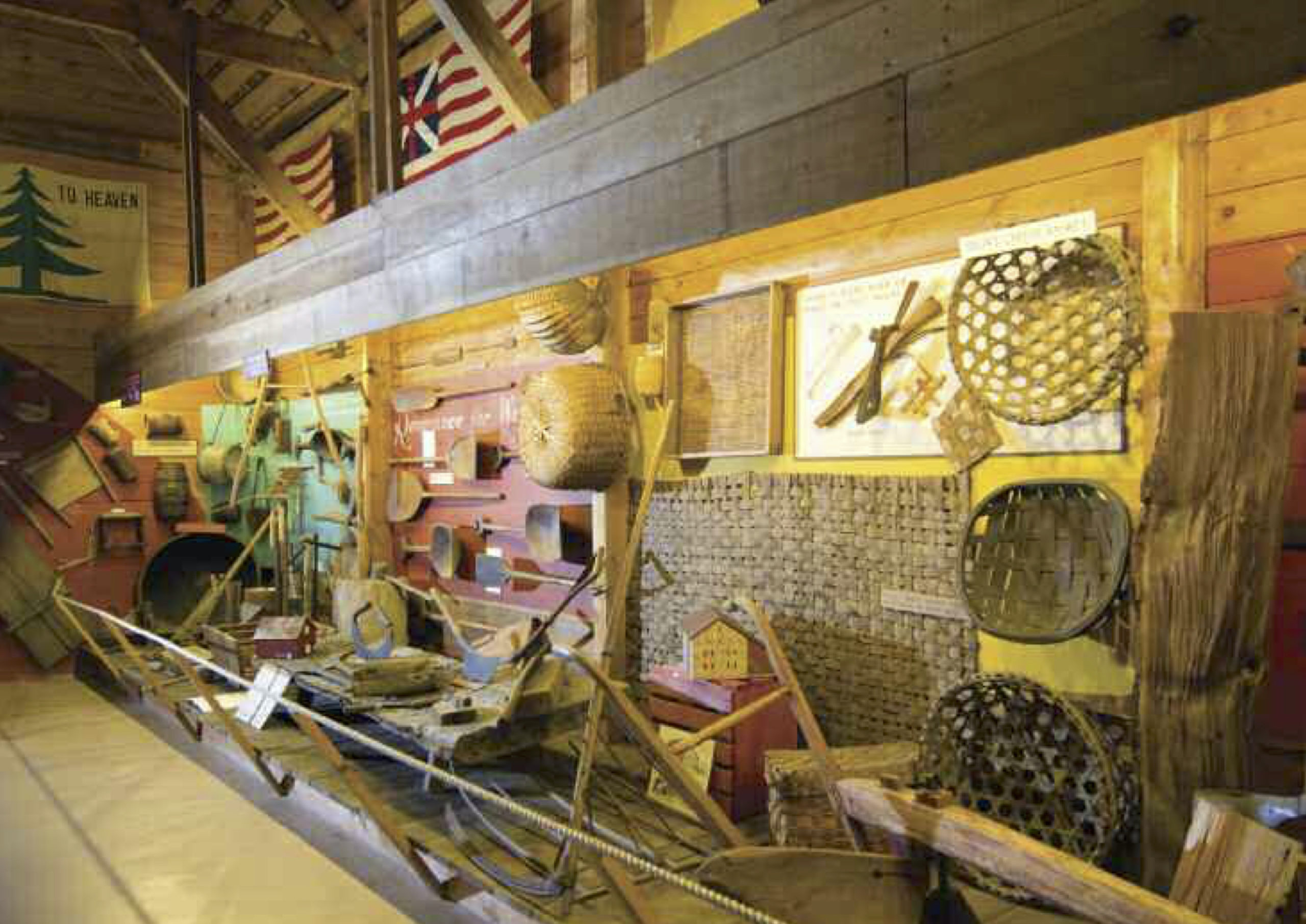By Karin Peterson
(c) Connecticut Explored Inc. Winter 2013-2014
Subscribe/Buy the Issue!
Labor in an industrialized society must follow regulated patterns: The work day starts and ends at a specific time under regimented conditions. The worker makes the same movement over and over, surrounded by others engaged similarly. Workflow is monitored and controlled by a third party. In return for his efforts, the worker gets money to purchase goods to meet his needs.
What a change from life in an agricultural and pre-industrial cosmos! Although a farmer or an artisan might work long hours in a harsh environment, his work might vary from day to day. If he wants to stop and take a drink or listen to a singing bird, he can. He is personally tied to the work of his hands and can feel satisfaction in his labor. If he exerts himself so that he produces more, he reaps the benefit.
The artifacts of this past world, items once necessary to everyday life but mostly forgotten today, can be viewed at the Eric Sloane Museum in Kent. Visitors see displays of Sloane’s personal collection of antique hand tools: hundreds of carpenter’s planes, hayforks, axes and augers, froes and spokeshaves, and more.
Twentieth-century artist, philosopher, and author Eric Sloane (1905-1985) wrote and illustrated more than 30 books, including American Barns and Covered Bridges (1954) and A Reverence for Wood (1964). One theme he frequently returned to was the importance of knowing one’s physical world, of being aware, a practice he felt had been lost in the shift to industrial society. Sloane eulogized what he thought were good aspects of the earlier way of life and celebrated the close relationship between the craftsman and his work, the pride and personal identification. Sloane felt that old tools provided one way to connect with those bygone days. As he wrote in A Museum of Early American Tools (1964)
“When you hold an early implement, when you close your hand over the worn wooden handle, you know exactly how it felt to the craftsman whose hand had smoothed it to its rich patina.”
Sloane also considered antique tools—with their clean, functional lines—works of art. He mounted groupings of tools from his collection in what he called “placements” for public exhibition. Donald Davis, president of The Stanley Works in New Britain, saw a display of Sloane placements at the New Britain Museum of American Art. Stanley was about to mark its 125th year in the tool-manufacturing business, and the company was considering how to commemorate the anniversary. Davis and Sloane, with help from Eric Hatch, chair of the Connecticut Historical Commission, came up with the plan for Stanley Works to donate land and a building and for Sloane to give his tools for exhibition inside and together give the newly created museum of tools to the State of Connecticut. The planners decided to locate the new museum in Kent, near Sloane’s home in Warren, where the company owned land along the Housatonic River. Not only did Sloane donate his extensive tool collection, he also designed and installed the museum’s exhibits. He grouped like tools together or mixed those that were used for a common purpose, such as logging. With his interpretive drawings and labels in his distinctive handwriting style, the exhibits became three-dimensional embodiments of pages from his books. The museum opened to the public in May 1969.
Sloane continued to be involved with the museum after it opened; there are even accounts of his coming back to “borrow” a tool he needed! In 1974 Sloane oversaw the construction of a pioneer log cabin on the museum grounds based on his book, The Diary of an Early American Boy 1805 (1962), which follows a year in the life of a teenage boy as he grows up in the world of hand work.
In addition to displaying tools, the Eric Sloane Museum shows examples of Sloane’s art and permits visitors to stand just inside his studio, which was re-created there after his death. The gift shop sells Sloane books and related titles and prints of his art. The museum is open from May to October.
Karin Peterson served as the museum director of the State Historic Preservation Office, Department of Economic and Community Development (formerly Connecticut Commission on Culture & Tourism) overseeing the Eric Sloane Museum, the Henry Whitfield State Museum, Old New Gate Prison & Copper Mine and the Prudence Crandall Museum.
Explore!
“The Kent Iron Furnace,” Fall 2006
Read more Historic Preservation stories and stories about products made and invented in Connecticut on our TOPICS page.
Eric Sloane Museum & Kent Iron Furnace
31 Kent Cornwall Road (Route 7), Kent
cultureandtourism.org


